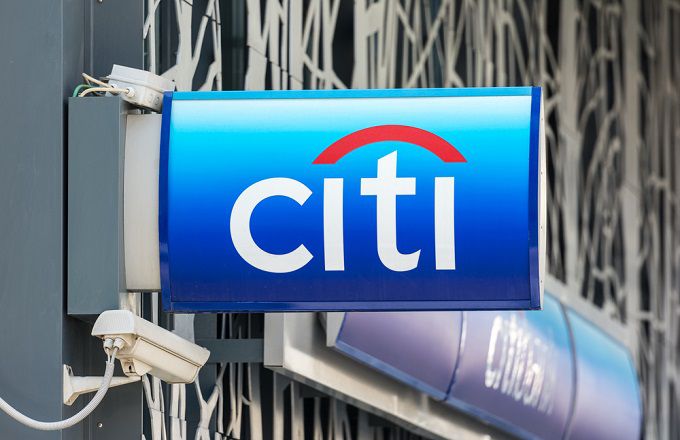Citigroup Inc. (C) shares closed the first half of 2019 at $70.03 on June 28, which became a key input to my proprietary analytics. The only level left over from the first half is its annual value level at $55.32, which held at the low back on Jan. 8. The daily chart shows a “golden cross,” and the weekly chart has been positive since the week of June 14, when the stock closed at $67.48.
Fundamentally, Citigroup is reasonably priced with a P/E ratio of 10.47 and a dividend yield of 2.51%, according to Macrotrends. The fourth biggest of the four “too big to fail” money center banks is expected to post earnings per share (EPS) of $1.82 when it reports results before the opening bell on Monday, July 15. The bank has beaten EPS estimates in 17 consecutive quarters and set its 2019 high of $72.00 on Friday, July 12. Some say that weaker trading revenue and higher loan loss provisions will put a crimp in second quarter results.
In the longer term, Citigroup stock is consolidating a bear market decline of 35% from its 52-week high of $75.24 set on Sept. 21 to its Dec. 25 low of $48.42. The stock is up 37.6% year to date and in bull market territory at 47.9% above the low.
The daily chart for Citigroup
The daily chart for Citigroup shows that the stock has been above a “golden cross” since May 7, when the 50-day simple moving average rose above the 200-day simple moving average to indicate that higher prices lie ahead. The stock could have been bought at its 200-day simple moving average between May 13 and June 5, when the average was $64.95. The horizontal lines are its annual value level at $55.32, the monthly value level for July at $63.53, and the semiannual and quarterly pivots at $67.85 and $68.15, respectively.
The weekly chart for Citigroup
The weekly chart for Citigroup is positive, with the stock above its five-week modified moving average of $68.70. The stock is also well above its 200-week simple moving average, or “reversion to the mean,” at $60.47. Citigroup has been above its “reversion to the mean” since the week of Jan. 16, when the average was $58.68.
The 12 x 3 x 3 weekly slow stochastic reading is projected to rise to 72.73 this week, up from 63.52 on July 5. At the December low, this reading was 8.13, below the 10.00 threshold as a stock that was “too cheap to ignore.”
Trading strategy: Buy Citigroup shares on weakness to the quarterly and semiannual value levels at $68.15 and $67.85, respectively, and add to positions on weakness to the monthly and annual value levels at $63.52 and $55.32, respectively,
How to use my value levels and risky levels: Value levels and risky levels are based upon the last nine weekly, monthly, quarterly, semiannual, and annual closes. The first set of levels was based upon the closes on Dec. 31. The original annual level remains in play. The weekly level changes each week. The monthly level was changed at the end of each month, most recently on June 28. The quarterly level was also changed at the end of June.
My theory is that nine years of volatility between closes are enough to assume that all possible bullish or bearish events for the stock are factored in. To capture share price volatility, investors should buy shares on weakness to a value level and reduce holdings on strength to a risky level. A pivot is a value level or risky level that was violated within its time horizon. Pivots act as magnets that have a high probability of being tested again before their time horizon expires.
How to use 12 x 3 x 3 weekly slow stochastic readings: My choice of using 12 x 3 x 3 weekly slow stochastic readings was based upon backtesting many methods of reading share-price momentum with the objective of finding the combination that resulted in the fewest false signals. I did this following the stock market crash of 1987, so I have been happy with the results for more than 30 years.
The stochastic reading covers the last 12 weeks of highs, lows, and closes for the stock. There is a raw calculation of the differences between the highest high and lowest low versus the closes. These levels are modified to a fast reading and a slow reading, and I found that the slow reading worked the best.
The stochastic reading scales between 00.00 and 100.00, with readings above 80.00 considered overbought and readings below 20.00 considered oversold. Recently, I noted that stocks tend to peak and decline 10% to 20% and more shortly after a reading rises above 90.00, so I call that an “inflating parabolic bubble,” as a bubble always pops. I also refer to a reading below 10.00 as “too cheap to ignore.”
Disclosure: The author has no positions in any stocks mentioned and no plans to initiate any positions within the next 72 hours.

